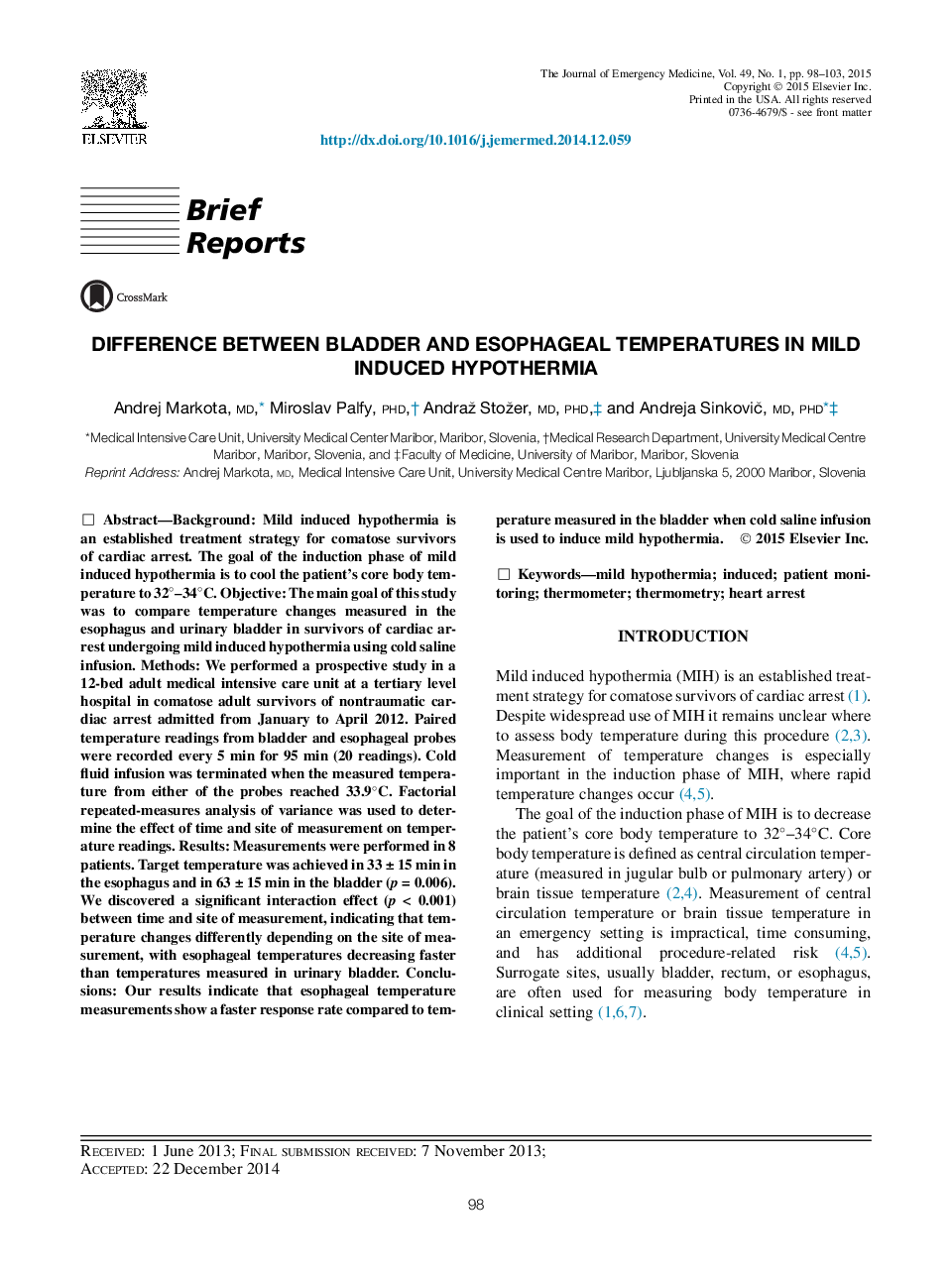| Article ID | Journal | Published Year | Pages | File Type |
|---|---|---|---|---|
| 3246259 | The Journal of Emergency Medicine | 2015 | 6 Pages |
BackgroundMild induced hypothermia is an established treatment strategy for comatose survivors of cardiac arrest. The goal of the induction phase of mild induced hypothermia is to cool the patient's core body temperature to 32°–34°C.ObjectiveThe main goal of this study was to compare temperature changes measured in the esophagus and urinary bladder in survivors of cardiac arrest undergoing mild induced hypothermia using cold saline infusion.MethodsWe performed a prospective study in a 12-bed adult medical intensive care unit at a tertiary level hospital in comatose adult survivors of nontraumatic cardiac arrest admitted from January to April 2012. Paired temperature readings from bladder and esophageal probes were recorded every 5 min for 95 min (20 readings). Cold fluid infusion was terminated when the measured temperature from either of the probes reached 33.9°C. Factorial repeated-measures analysis of variance was used to determine the effect of time and site of measurement on temperature readings.ResultsMeasurements were performed in 8 patients. Target temperature was achieved in 33 ± 15 min in the esophagus and in 63 ± 15 min in the bladder (p = 0.006). We discovered a significant interaction effect (p < 0.001) between time and site of measurement, indicating that temperature changes differently depending on the site of measurement, with esophageal temperatures decreasing faster than temperatures measured in urinary bladder.ConclusionsOur results indicate that esophageal temperature measurements show a faster response rate compared to temperature measured in the bladder when cold saline infusion is used to induce mild hypothermia.
